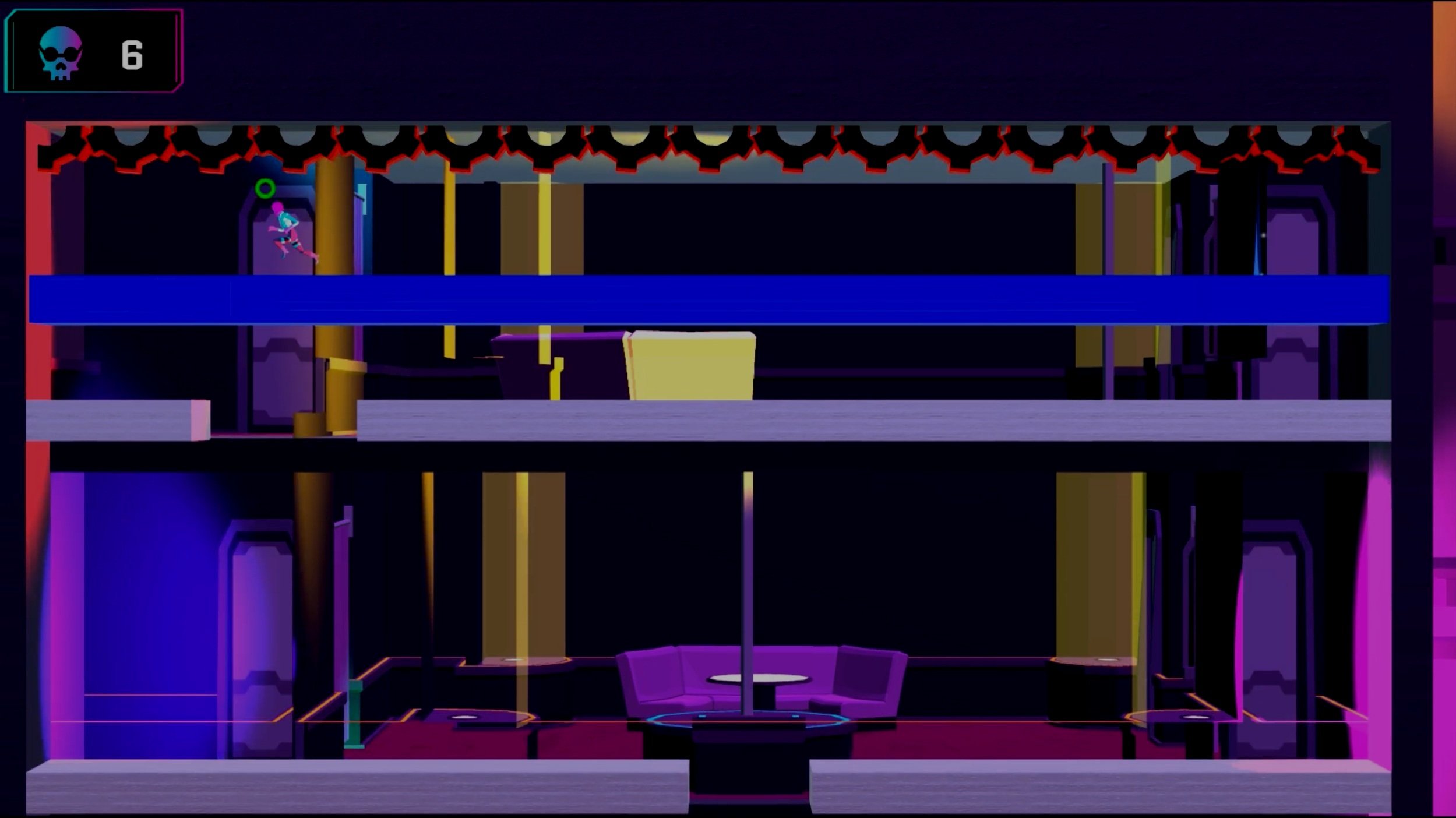
This was my first project within a larger team, where I worked on a number of levels over the course of a year.
Overview
Cyber Gauntlet is a 2D Cyberpunk Platformer consisting of ten levels in which the player must traverse a futuristic city and traverse various hazards. It was a team comprised of designers and programmers for the majority of production, until we outsourced artists from other disciplines in post-production.
As a level designer on the project, I took charge of designing two entire levels, as well as providing support designing and playtesting on others.
On these levels, I had the following responsibilities:
Level Design - planning, drafting, greyblocking.
Implementing Hazard Assets for each levels theme and ensuring they had a steady sense of progression while teaching the player.
Playtesting and Iteration for all levels to ensure we were hitting our targeted experience for each level.
Implementation of art assets, lighting and created prefab assets to build out the environments of each setting and contribute to the level navigation.
Development had its fair share of challenges, which I’ll go into more detail about below!
If you want to see gameplay of all the levels, we made a trailer!
We also have the game published on Itch.io. You can go to download the game below!

Level Design Breakdown
Modular Room Flow
When we first started building the levels in engine, we were painstakingly greyblocking each individual part of each level and as a result, we fell behind early in production for how many levels we wanted to make and reaching our milestones.
Eventually we came up with the idea of building a modular level framework. We built a lot of smaller “rooms” that had their entry and exit points and saved them as prefab assets, which meant we could drag and drop them into the world space and connect them to each other in various combinations, with camera transitions between rooms to convey when the player has entered a new “room” of the level.
We built rooms of varying size and shapes, taking into account verticality and player movements, including gameplay mechanics like the double jump and dash, and incorporated certain hazards and rooms with save points to cut down on the time it would’ve taken to add them in the levels afterwards.
This kind of modular level design drastically sped up our greyblocking and design process, as we were able to build out spaces very quickly and test out how they felt to move in in conjunction with each other. If a room didn’t make the level flow feel smooth, we could just take it out and try a different room or combination.
Level Design
We planned out the progression of each level with a steady progression in difficulty in mind, with the levels I designed being the ones that start to bridge from the early ones that taught the player about the different kinds of hazards, platforms and how to navigate them, to the midpoint levels that start to ramp up more in difficulty.
For the level shown here, this is one of the first instances of showcasing the jump pads and swinging gears. I wanted to teach the player about timing and combining the levels platforms with the players own mechanics, as it required both timing to use the jump pads and using their dash to avoid getting hit.
As far as teaching the player, I designed rooms with the notion of introducing the player to one type of obstacle and how to use their abilities to overcome it, then incorporating that obstacle with another platform or around a specific room type to test the player on how they could use the level space and their gameplay mechanics to get around it.
Environmental Design
With the visual storytelling of the levels, we wanted to showcase the player character traversing through the lower level parts of the city like sewers up to ground level areas like garages and factories and finally to the high-end party districts like nightclubs.
To build out those environments and give the levels more depth, we built out these locations in the backgrounds using 2D assets that gave off the appearance of a 3D space, or used 3D assets and lighting to build out mini dioramas that made the world feel more lived in and matched the colors of the playable platforms with those environments.





